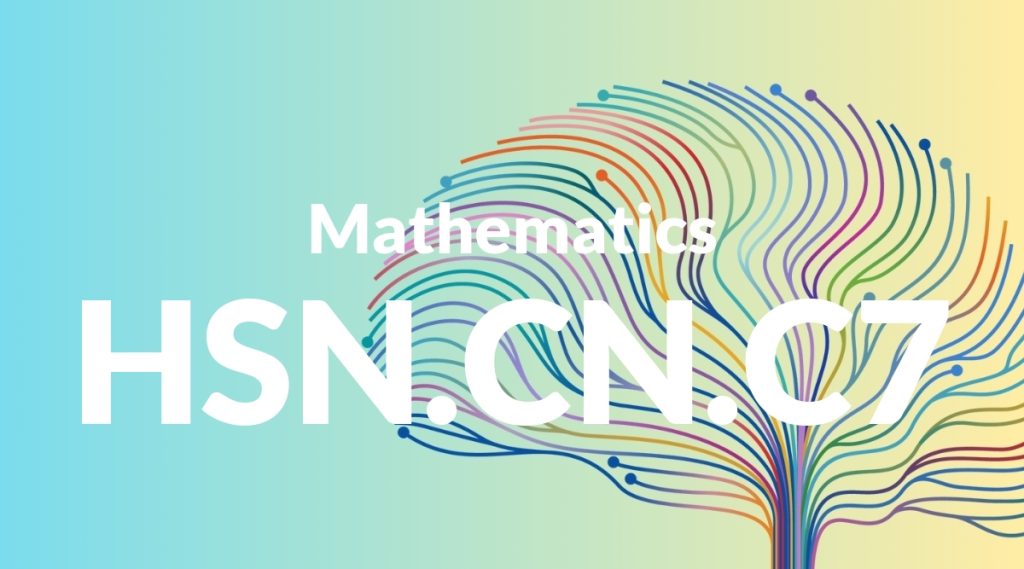Standard: HSN.CN.C7 – Solve quadratic equations with real coefficients that have complex solutions.
Grade level: High School: Number and Quantity
Subject: Mathematics
Domain: The Complex Number System
Teacher Overview
This standard involves solving quadratic equations that have complex solutions. It is important because it extends students’ understanding of quadratic equations beyond real numbers and introduces them to the concept of complex numbers, which are crucial in advanced mathematics and various real-world applications. Students should be comfortable with solving quadratic equations with real solutions and have a basic understanding of imaginary numbers and algebraic manipulation.
After mastering this standard, students will be able to apply complex numbers to solve real-world problems, understand the polar form of complex numbers, and delve into more advanced topics in mathematics, such as complex analysis.
Common Misconception 1
Some students may think that all quadratic equations have only real solutions. This is incorrect because quadratic equations can also have complex solutions, especially when the discriminant is negative.
Intervention 1
Use visual aids such as the complex plane to show how solutions can exist outside the real number line. Demonstrate this with specific examples and graphing tools.
Common Misconception 2
Another common misconception is that complex solutions are not useful in real-world applications. This is incorrect as complex numbers are used in many fields such as electrical engineering, quantum physics, and signal processing.
Intervention 2
Provide concrete examples from various fields where complex numbers are essential. Discuss how complex numbers are used in analyzing AC circuits, solving Schrödinger’s equation, and filtering complex signals.
Prerequisite Knowledge
Students should have a strong understanding of solving quadratic equations with real solutions, basic algebraic manipulation, and an introduction to imaginary numbers.
Subsequent Knowledge
After mastering this standard, students will be able to apply complex numbers to solve real-world problems, understand polar form of complex numbers, and delve into more advanced topics in mathematics, such as complex analysis.
Instructional Activities
- Graphing quadratic equations with complex solutions on the complex plane.
- Solving real-world problems that involve complex numbers.
- Using software tools to visualize complex solutions.
- Group activities to solve quadratic equations with complex solutions and discuss their applications.




